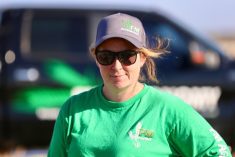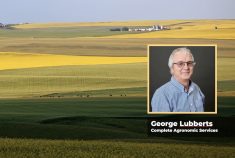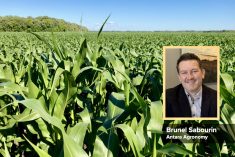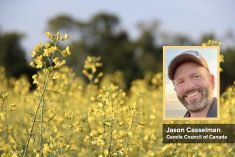What do agronomists wish farmers would ask for, or stop asking for, or understand better about their jobs? And how can farmers get the most out of their relationships with agronomists?
While ultimately the customer calls the shots, Country Guide asked a few Western Canadian consulting agronomists what they would like to see from their clients.
They said their wish lists include better communication, for clients not to be afraid to ask questions, not to hesitate to share data, and to communicate their goals and expectations.
Read Also

Are you ready for farm succession?
What motivates some farmers to make a succession plan while others don’t seem worried.
This series will provide insights from agronomists on how already good relationships and services might be made even better.
Marcus Dueck
Four Oak Ag Solutions
Kleefeld, Man.
While Marcus Dueck has developed a great working relationship with clients over the past 18 years, he says there is always room for improvement as he aims to provide the best crop production advice that he can.
“Time is a big one that comes to mind,” says Dueck, who along with dairy farming and cash cropping, is also owner of Four Oak Ag Solutions, consulting services at Kleefeld, southeast of Winnipeg. “Often enough some things are left to the last minute, which means there may not be time to analyze information and make the best recommendation.”
Soil sampling is one example that comes to his mind. If soil sampling can be done in the fall, then that leaves all winter to look at the information and make fertility and cropping recommendations for the coming season. It also gives the producer more time to source inputs, perhaps at better prices.
“If soil sampling is left until the spring, then it may cost extra to fast-track the analysis, it is a different testing process that may provide information in a different format, there may be more of a rush to make recommendations and input decisions, and a producer may have buy whatever inputs are available at the price that day,” says Dueck. “Depending on circumstances, a spring soil test may be the only option, but it can lead to making more rush decisions which may not always be the best.”
Dueck encourages clients to make use of his consulting and advisory experience before making decisions. Rather than a producer taking some action and then talking to the crop consultant about it later, he says, “Often I can offer advice or experience that may help some action to be more effective or help avoid a costly mistake. I’m always available for clients to bounce their ideas off me and share my knowledge.”
He also urges clients to share as much information as possible with the crop consultant to aid in making better decisions. “I know as a farmer myself that my farm data is valuable,” Dueck says. “And there can be a tendency to only share so much. I understand that thinking. But when dealing with crop planning and production decisions the more a producer can share, the better. It may even involve sharing that somewhere in the past they made a mistake. So be it, it happens. But having a full understanding helps the consultant make better recommendations. It may not seem important, but that bit of information or data not shared could be important to cropping decisions for the season ahead.”
And, if at all possible, he also urges producers to follow through with plans for on-farm test plots or comparison trials. In the off-season there may be some great plans made to evaluate products, or varieties, or various treatments during the growing season. “But then when field work starts, the rush is on, days get busy and that extra 20 minutes to half hour needed to set up side-by-side comparison plots, for example, goes by the wayside,” says Dueck. When fall and winter rolls around and it’s time to have a look back at the crop year, the farmer must then tell Dueck that they didn’t get those comparison plots done.
“And almost immediately after they tell you they didn’t do the comparison plots, they say I should have taken that extra 20 minutes to get them set up,” says Dueck.
“I know the growing season can be hectic at times, but the information provided by those comparison plots and side-by-side trials is important. It is information that may lead to making better decisions about products or varieties or treatments for the following year. The time it takes to get them done is a good investment.”















